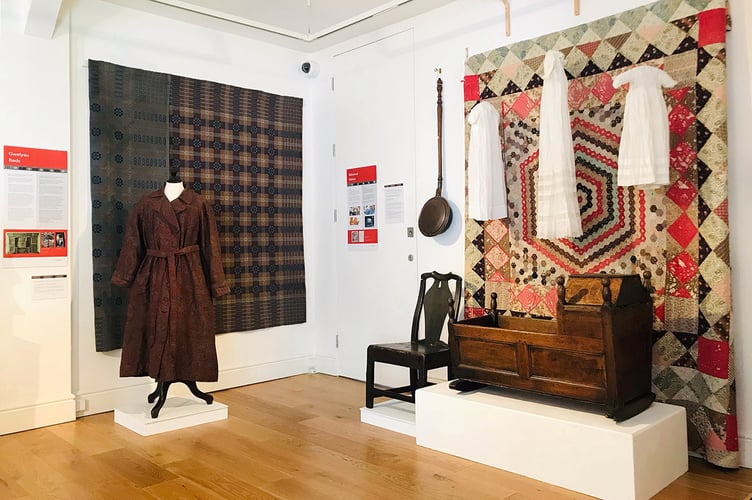Storiel in Bangor continues to host the exhibition Sleep.
The venue has a fascinating collection of sleep-related objects not normally seen together, and this exhibition is a chance to see some of them.
As autumn starts and the ancient need to find shelter and warmth increases, this exhibition is described as a cosy, colourful celebration of patchwork quilts, traditional bed covers, night clothes, a cradle, hot water bottles and even a model of a traditional box bed, made in the 19th century.
Many of the fabrics are over 100 years old, made from locally produced wool and linen.
The exhibition also looks at the history of beds, and their wider associations; the tradition known as ‘caru yn y gwely’, ‘courting in bed’ or bundling; lullabies and bedtime stories; dreams and insomnia.
Sleep: an essential activity that all animals must do, as essential as eating, drinking, and breathing to sustain life.
We have a diurnal circadian rhythm – an in-built clock that makes us want to sleep daily when it gets dark for several hours.
During sleep the body and mind are rested, allowing restoration of the body’s nervous, skeletal, immune, and muscular systems.
As well as giving our bodies time to recover, what happens in the brain during sleep is clearly very complex.
Scientific research on sleep is widespread, attempting to further unlock some of the mysteries of sleep. It has been shown that insufficient sleep has severe consequences physically and mentally, for example diabetes, obesity, cancer, Alzheimer’s disease, coronary disease, anxiety, and immune deficiency all have links to sleep deprivation.
Find out more at Storiel. Sleep is on until Saturday, 30 December.




